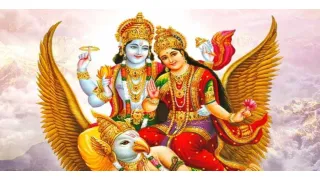Shardiya Navratri is a revered Hindu festival celebrated with devotion and grandeur across India. Spanning nine days, it honours Goddess Durga and her various avatars, with each day dedicated to a different form of the goddess. This year, Navratri begins on October 3 and will conclude on October 12. During this period, devotees offer prayers, observe fasts, and engage in various rituals to seek the goddess’s blessings. Day 4 of Navratri is dedicated to Goddess Kushmanda, the bringer of light and life.
Navratri 2024 Day 4: Dedicated to Maa Kushmanda
Day 4 of Navratri celebrates Maa Kushmanda, the fourth form of Goddess Durga. Known as the creator of the universe, she is believed to have crafted the world with her radiant smile, bringing light to the cosmos. Her name, "Kushmanda," is derived from three words: 'Ku' meaning 'a little,' 'Ushma' meaning 'warmth,' and 'Anda' meaning 'cosmic egg,' symbolizing her ability to generate the universe with warmth and energy. Devotees believe that worshipping her dispels darkness from their lives, eradicates sorrows, and brings health and prosperity.
The Story of Maa Kushmanda

Image Source: Twitter
According to Hindu mythology, there was nothing but darkness before the universe existed. It is believed that Maa Kushmanda brought life to the cosmos with a simple smile. Her radiant energy, symbolized by the sun, filled the universe with warmth, light, and vitality.
After defeating the demon Jatukasur in her Chandraghanta form, the world was again plunged into darkness. Maa Parvati assumed the form of Maa Kushmanda, restoring the lost light and creating the universe anew. This form of the goddess represents the power of creation, balance, and life.
Maa Kushmanda’s ability to bring light to the universe signifies the triumph of good over evil, life over death, and light over darkness. She is worshipped for her power to nurture and protect, blessing her devotees with strength, vitality, and happiness.
Navratri 2024 Day 4 Colour: Orange and Its Significance
The colour associated with Day 4 of Navratri is orange. This vibrant hue represents warmth, life, and positive energy, perfectly embodying the essence of Maa Kushmanda. Devotees don orange attire on this day to attract the goddess’s blessings of vitality and enthusiasm. The colour is not only a reflection of the divine energy but also a way to invoke Maa Kushmanda’s nurturing and life-giving powers.
Maa Kushmanda Puja Vidhi (Worship Rituals) for Day 4
Worshipping Maa Kushmanda on the fourth day of Navratri is believed to end suffering, pain, and diseases. Here’s a step-by-step guide to performing the puja:
- Purification: Start the day with a cleansing bath, followed by meditation to calm your mind and focus on the divine.
- Offerings: Prepare an offering that includes Ganges water, red flowers, red clothes, vermillion (sindoor), akshat (unbroken rice), panchmeva (five types of dry fruits), naivedya (offering of food), and items for Maa Kushmanda’s adornment (shrungar). You can also offer a white gourd, which is considered auspicious.
- Mantras: Continuously recite the mantra "Ain Hree Devayi Namah" during the puja.
- Bhog: Offer curd and pudding to the goddess. Malpua, a sweet delicacy, is also offered to clear debts and seek financial prosperity.
- Aarti: Conclude the puja by performing the aarti with a ghee or camphor lamp, seeking the goddess's blessings.
Maa Kushmanda Mantra, Stuti, and Prarthana

Image Source: Twitter
Reciting mantras and prayers dedicated to Maa Kushmanda amplifies the benefits of worship. Here are the sacred verses to chant on this day:
- Mantra: Om Devi Kushmandayai Namah॥
- Prarthana: Surasampurna Kalasham Rudhiraplutameva Cha। Dadhana Hastapadmabhyam Kushmanda Shubhadastu Me॥
- Stuti: Ya Devi Sarvabhuteshu Maa Kushmanda Rupena Samsthita। Namastasyai Namastasyai Namastasyai Namo Namah॥
Shubh Muhurat for Day 4 Puja
Performing rituals at the right time enhances the spiritual significance of the worship. According to Drik Panchang, here are the auspicious timings for Day 4 of Navratri:
- Brahma Muhurat: 4:39 AM – 5:28 AM
- Pratah Sandhya: 5:03 AM – 6:17 AM
- Abhijit Muhurat: 11:45 AM – 12:32 PM
- Amrit Kalam: 2:25 PM – 4:12 PM
- Vijaya Muhurat: 2:06 PM – 2:53 PM
Bhog to Offer on Navratri Day 4
On the fourth day, offering Malpua to Goddess Kushmanda is believed to help devotees clear debts and remove financial hardships. Malpua, a sweet pancake-like dish, symbolizes abundance and prosperity. After offering it to the goddess, it is distributed as prasad among family members, sharing the blessings of the divine.
Also Read: Durga Puja 2024: Dates, Rituals, Timings, and Significance

































